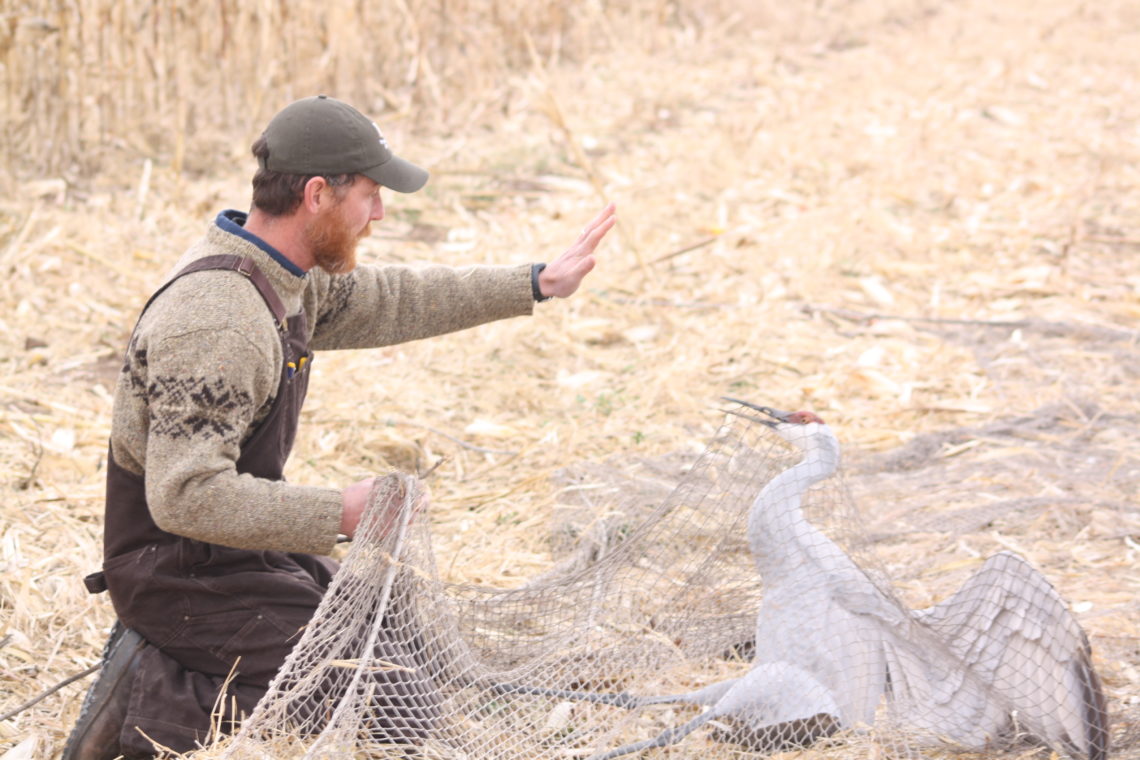
Biologist Dan Collins calms down a Sandhill Crane after capture in order to apply bands and a transmitter (photo courtesy of Steve Rimer, USFWS).
By Dan Collins, Migratory Bird Coordinator, USFWS Southwest Regional Office
Aldo Leopold once said, “When we hear his call we hear no mere bird. We hear the trumpet in the orchestra of evolution. He is the symbol of our untamable past, of that incredible sweep of millennia which underlies and conditions the daily affairs of birds and men.”
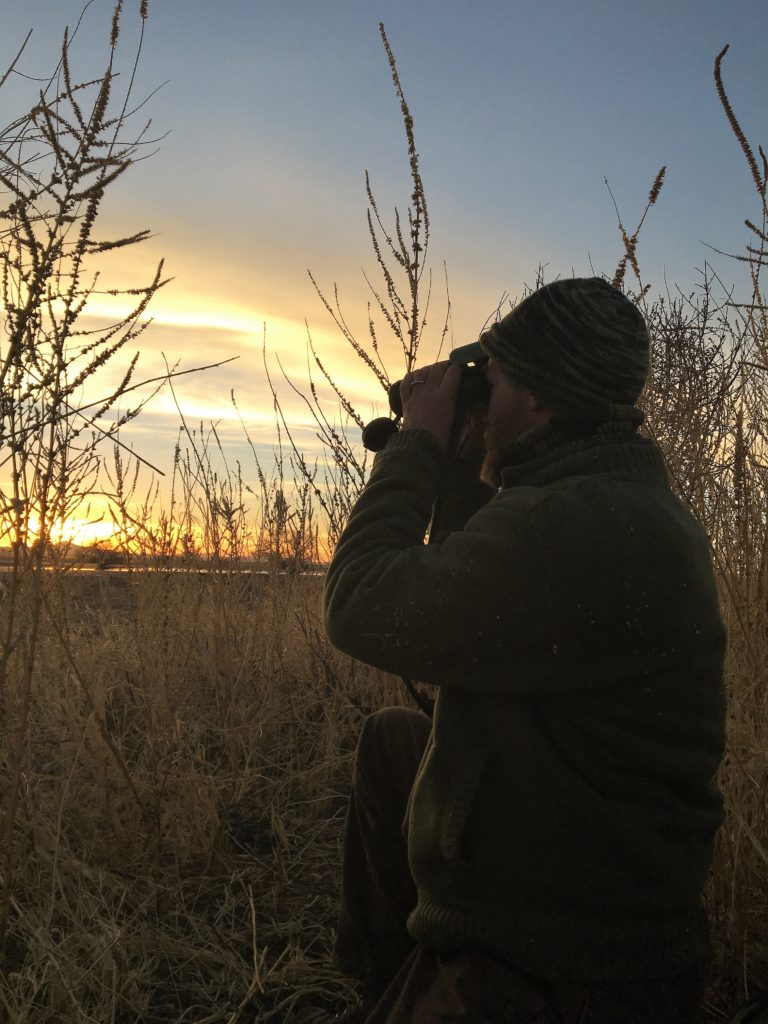
Dan Collins searches for Sandhill Cranes at sunrise in Whitewater Draw State Wildlife Area, AZ (photo courtesy of Emily Clark).
I couldn’t agree more. During the fall and winter when I hear cranes flying overhead or waking up to a chorus of cranes in a marsh prior to leaving the roost for the day, it strikes a chord within me. It makes me appreciate the beauty of nature, and motivates my desire to learn more about how we fit into this larger ecological puzzle of the desert southwest.
Six years ago, my partners and I embarked on a series of projects to better understand the movements of the Western Greater Sandhill Crane (Antigone canadensis tabida) in the desert southwest. Specifically, our work focused on the Middle Rio Grande Valley of New Mexico with the Rocky Mountain Crane Population (RMP), and the Lower Colorado River Valley in Arizona with the Lower Colorado River Valley Crane Population (LCRVP). As the initial project data rolled in for both areas, the group of research scientists thought critically about the results and began to identify several areas in which we wanted to “fill in” the blanks. The biggest areas of interest were the Willcox Playa and its surrounding landscape, as well as the Gila Bend area. Due to concerns about impending construction projects, we decided that for the winter of 2017-2018, we would focus our efforts on the Willcox Playa landscape. The Willcox Playa area has been designated as an Important Bird Area by Birdlife International and the National Audubon Society, largely due to the roughly 25,000 Sandhill Cranes that are estimated to overwinter there. It is of continental importance to migratory birds overall.
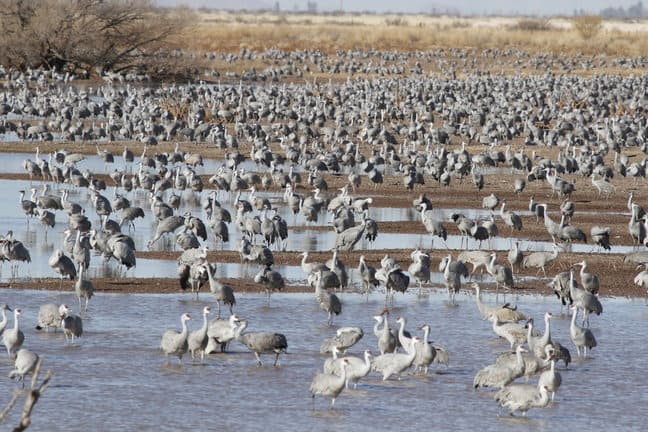
Sandhill Cranes winter by the thousands at Whitewater Draw State Wildlife Area, AZ (photo courtesy of Emily Clark).
The main reason for concern among natural resource managers is the rapidly growing development of wind energy, associated infrastructure, and its impacts on wildlife such as Sandhill Cranes. Although there has been much political support for the development of wind energy in North America, little is known about the impacts of wind energy on wildlife and their habitats. These impacts include mortality due to collisions with wind turbines and transmission lines, disturbance and displacement, and loss or degradation of habitat due to placement of turbines and transmission lines.
In southern Arizona and central New Mexico, the SunZia transmission line will include two overhead transmission lines located within a right-of-way that will typically be 400-1000 feet wide, connecting wind energy fields in New Mexico to users in Arizona and California. The proposed route travels through two important wintering areas for tens of thousands of Sandhill Cranes in the Willcox Playa of southern Arizona, as well as along the Middle Rio Grande Corridor between Bosque del Apache National Wildlife Refuge and New Mexico State Wildlife Areas north of Sevilleta National Wildlife Refuge (see map below). In New Mexico, four years of winter movement data have shown that the power line will split an important corridor used for daily foraging movements between Bosque del Apache NWR and New Mexico State Wildlife Areas.
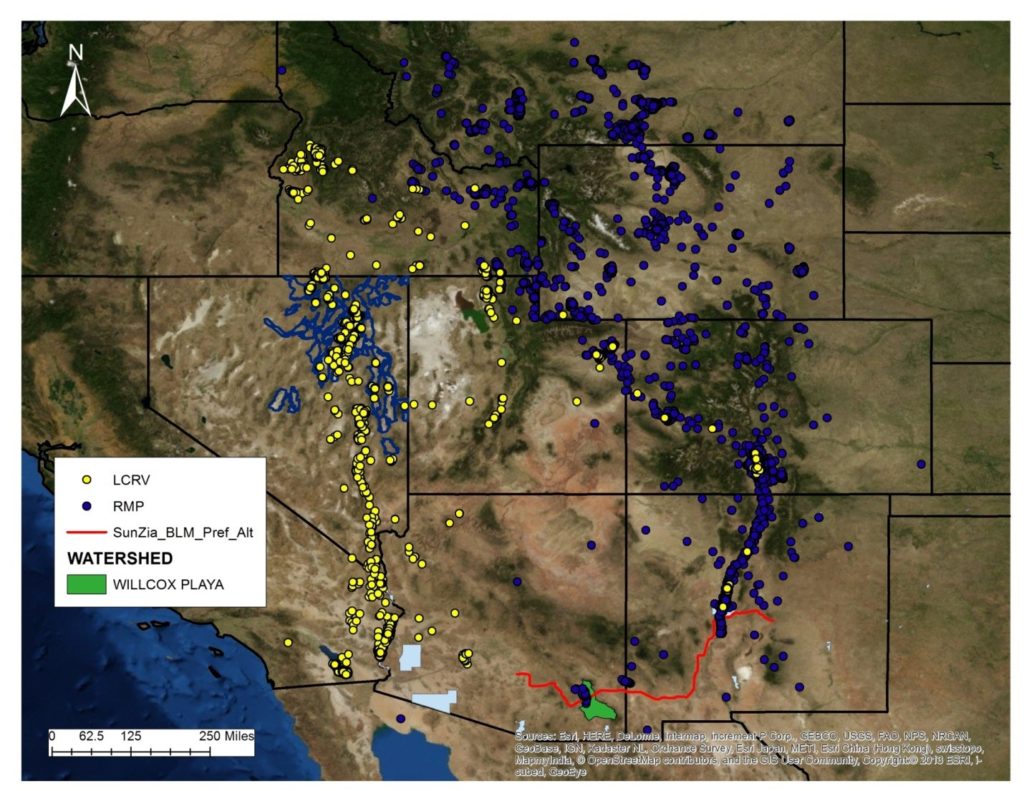
Wintering, breeding, and migratory movements of Sandhill Crane populations in the Lower Colorado River Valley (yellow) and the Middle Rio Grande Valley (blue) show distinct pathways and separation of populations across western North America. The area between populations represents wintering areas where we have little to no knowledge of winter distribution or movement patterns in the Wilcox Playa area (green polygon) in southern Arizona where a proposed transmission line (red line) bisects an important wintering area for >25,000 Sandhill Cranes.
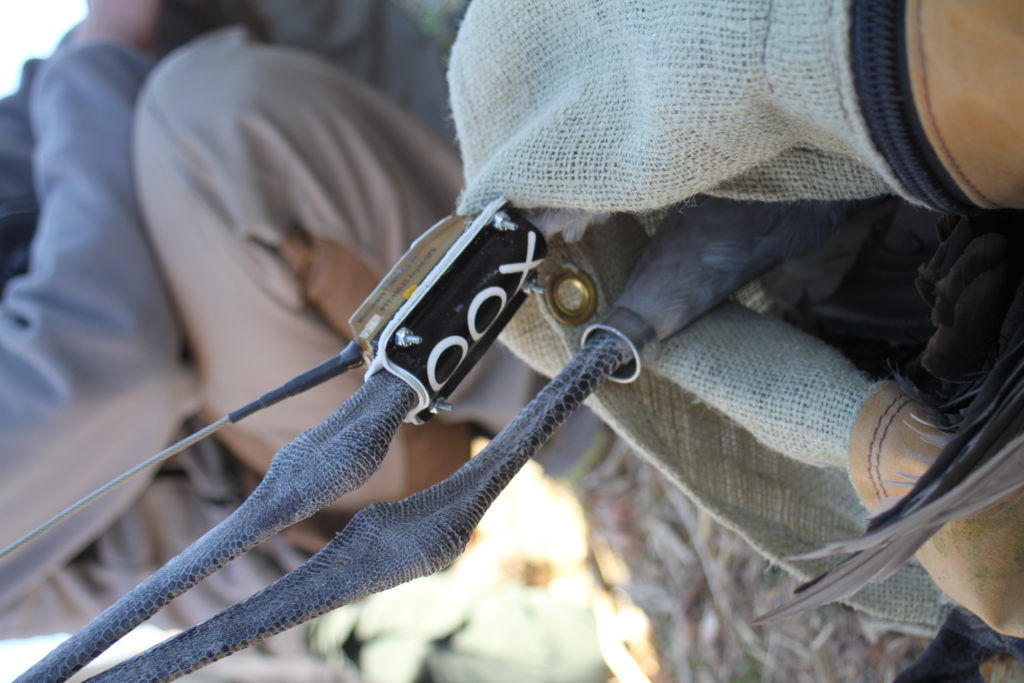
An alphanumeric band and a GSM transmitter are used to track individuals and movements of Sandhill Crane (photo courtesy of Dan Collins).
Our objective is to collect pre and post construction data by attaching GSM transmitters that collect GPS quality data to inform agencies and land managers on where to target wintering landscapes for conservation of Sandhill Cranes within the Willcox Playa watershed. Currently, we have six transmitters deployed in the Willcox Playa area collecting data, and an additional 20 transmitters are planned to be deployed prior to construction. These transmitters will allow us to investigate the future impacts of the SunZia transmission line including the potential collision risks, habitat degradation and fragmentation, disturbance displacement, and Sandhill Crane’s use of the Willcox Playa Watershed in Cochise County Arizona.
I can’t say thank you enough to all the partners involved in these projects! They include Texas Tech University, USFWS National Wildlife Refuges, New Mexico State University, USGS New Mexico Cooperative Fish and Wildlife Research Unit, Intermountain West Joint Venture, Arizona Department of Game and Fish, New Mexico Department of Game and Fish, Idaho Department of Fish and Game among others.


 English
English  Español
Español